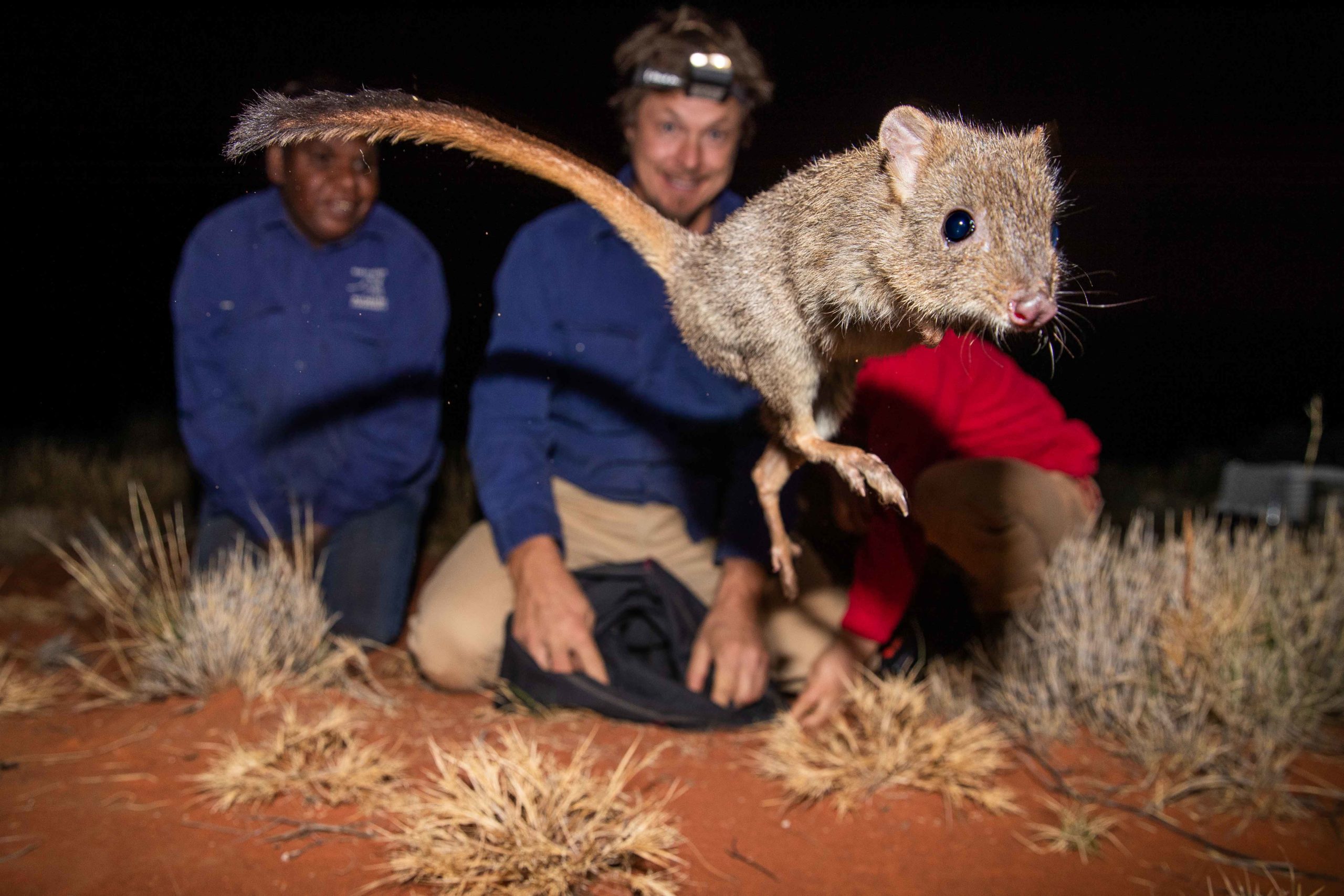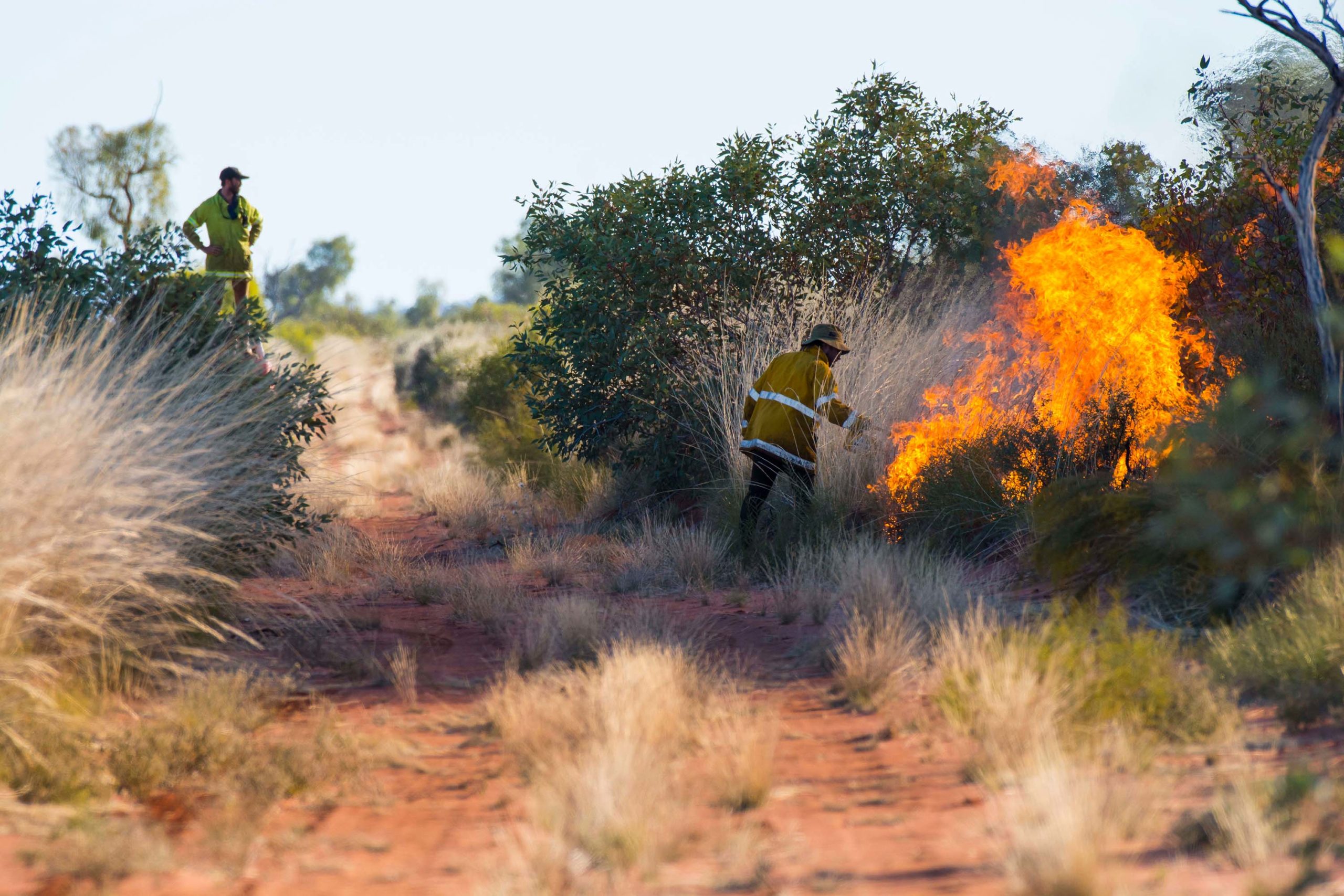By Dr Jennifer Pierson, Senior Ecologist and Dr John Kanowski, Chief Science Officer
The impacts of climate change can be felt across the globe. The average increase in temperature has already surpassed 1°C, and Australia has experienced an average increase of 1.4°C (IPCC 2021). While it can be hard to imagine what these changes in average temperature might mean for Australian wildlife, it is easy to understand how the associated increases in extreme events can threaten already imperilled species. The 2019–2020 bushfires stand out as a stark example of how an extreme event can impact millions of Australian animals.

Climate change will affect nearly every aspect of Australian Wildlife Conservancy’s (AWC) efforts to achieve our mission. Incremental changes to climate variables will cause shifts in species distributions, which will have flow on effects for species interactions, such as food and shelter requirements. Extreme heat, more frequent droughts and variable and intense rainfall can all cause individual mortality and sharp population declines which threaten already small and fragmented populations. Fire, weeds, and feral animals will all be affected by these ranging impacts to climate change. When we consider this reality, it can be a bit overwhelming to know how to tackle such an omnipresent threat.
BUT THERE IS HOPE…
Fortunately, it is possible that some species can adapt, move, be moved, and/or be buffered from the impacts of climate change. AWC plans to use a range of scientific tools, and our expertise in conservation to help protect as many species as we can.
On the science side, predictive models continue to fine tune the range of potential future climate scenarios that may exist. These models incorporate weather patterns, global emissions scenarios, and past warming trends to spatially project future climate variables and extreme weather. Species distribution models use past and current information combined with climate models to project where climate may be suitable for species in the future. There are uncertainties that remain, particularly surrounding how humans will respond to the call to reduce emissions.
AWC ecologists are working to develop strategic frameworks to apply this knowledge, prioritising and planning for an uncertain future. The first step is to identify general principles for prioritising and planning actions, with input from AWC’s Science Advisory Network and other experts. The next step is to apply these principles to operational programs and develop specific strategic frameworks for each one: reintroductions, acquisitions, and conservation and land management.
 Brad Leue/AWC
Brad Leue/AWC
AWC will adopt guiding principles from climate change adaption programs, including the IUCN and Climate Change in Australia, to conduct standard vulnerability assessments and use these to inform conservation management programs. Vulnerability will evaluate three factors:
Adaptation planning will be guided by the vulnerability assessments, considering multiple future scenarios. This ‘ready for anything’ approach ensures the necessary triggers, thresholds, and pre-planning are identified early and management can be proactive instead of reactive. Each program will have a bespoke strategic framework to ensure the outcomes are readily applicable in AWC’s operational environment.
AWC’s nationally leading reintroduction program is currently focused on reintroducing threatened mammals to former parts of their range across the country. The framework we develop will guide management actions to ameliorate threats on properties where species currently exist, as well as identifying properties that may be suitable in future climate scenarios. Managing adaptive capacity through active metapopulation management will be a key feature. In addition, translocations outside the pre-European range may have to be considered.
AWC’s acquisition program is currently focused on adding projects in regions that will do most to increase the number of species we conserve. Given climate change, the framework must also take into account predicted species’ distributions. Maximising representation into the future for imperilled species will be a key feature.
 Wayne Lawler/AWC
Wayne Lawler/AWC
AWC’s conservation and land management program is focused on delivering practical threat management on AWC sanctuaries and partnership areas. The framework we are developing must take into account how climate change will affect threat management, such as the risk of wildfire and the distribution of introduced plants and animals. Effective management of threats may increase the resilience of ecosystems to climate change impacts.
The impacts of climate change are expected to increase and persist over the long term. For this reason, climate change adaptation will be an ongoing and iterative process for AWC, one where key knowledge gaps are identified to feed into research priorities, the Ecohealth monitoring program and conservation management.
Read and download the full issue of Wildlife Matters here.
Donate to help save Australia’s threatened wildlife and wild places
Donate Now